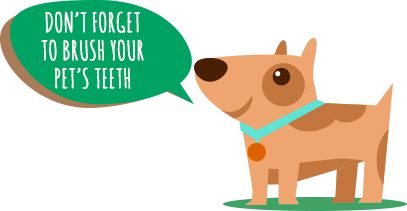before

after

- FAQ's
No. It can be performed on the vast majority of dogs and cats but for some of them It is not appropriate.
Example of pets for whom Non Anesthetic Dental is not appropriate are; pets with caries, stomatitis, severe gingivitis, fracture teeth, gum disease or any other condition that requires a doctor’s intervention. There are also the cases where pets are uncooperative or aggressive.
No. The Enamel covers the outside of the tooth. It is 1mm thick and the strongest substance mammals make. Its surface is too hard to be marked up by a dental scaler and its function is to protect the tooth from wear.
Our hygienists are highly trained and able to remove the plaques and tartar from inside and outside of the teeth and above and below the gum line, but under certain circumstances we might not be able to: root exposure, deep pockets.
Yes. We only use sterile tools and a different dental scaler on each dog.

prediagnosis
Before we begin the non-aneshtetic dental cleaning (dental prophylaxis) a licensed technician will request a brief medical history in order to learn more about your pet’s overall health, followed by a detailed dental examination to assess the current state of the pet’s dental health. As it is determined that a non-anesthetic cleaning is attainable, Smiley’s staff will create a pleasant environment so your pet feels safe and comfortable.
Whereas the pets react emotionally to the conditions of the environment, people and other animals, we use music therapy (use of music and its elements with the goal of establishing positive physical, social and mental changes) as well as homeopathic remedies (Bach flowers) in order to reduce agitation and enhance concentration.
In the initial evaluation, the depths of gingival pockets are measured. If there are pockets greater than 3 millimeters, we note that an effective cleaning is not possible without utilizing anesthesia. If, for some reason, it is determined that your pet is not a good fit for the non-anesthetic dental cleaning, we will recommend an anesthetic dental.
During the procedure we scale the pet’s teeth utilizing sterilized dental equipment. All tartar buildup is removed and the teeth is then polished.

Patient discharge
Once the procedure is finalized, a detailed explanation of the results is provided for home care planning purposes as well as in order to recommend the next appointment. Don’t forget to ask questions as this is your opportunity to clarify doubts and concerns.

